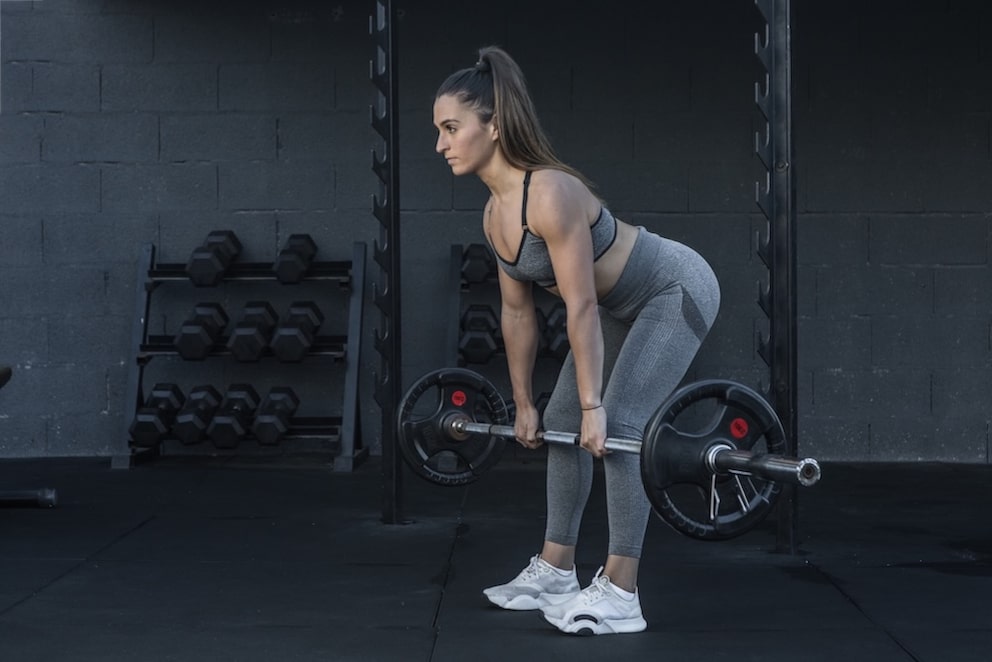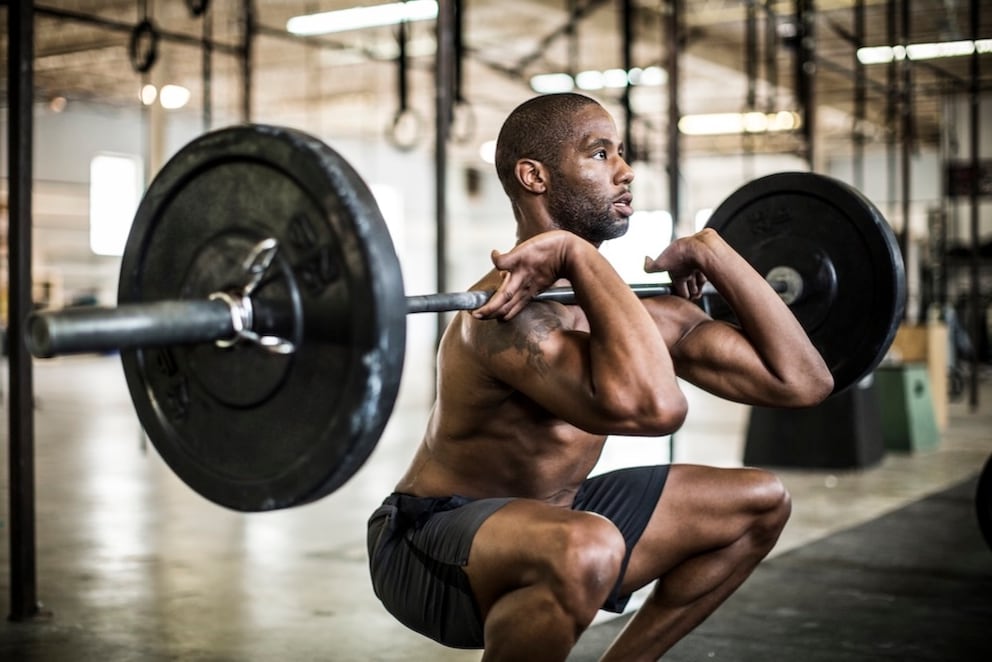July 19, 2025, 4:16 pm | Read time: 4 minutes
Deadlifts and squats are true classics when it comes to strengthening the lower body, especially the thighs and glutes. But what are the differences, and which exercise yields better results? FITBOOK fitness expert Janine Riedle compares them and explains why deadlifts might be more suitable for some than squats.
Deadlifts and squats are quite similar in execution: Both exercises involve bending the knee and working with weights. Both exercises train the gluteal muscles and the quadriceps femoris, the four-headed front thigh muscle. However, deadlifts and squats—known as Kreuzheben and Kniebeugen in German—differ in certain aspects and offer various advantages.
What Are Deadlifts

Romanian deadlifts with a barbell are an effective full-body exercise that engages many muscles simultaneously. Primarily, the following muscles are activated:1
- M. quadriceps femoris: quadriceps muscle
- M. erector spinae: spinal erectors
- M. gluteus maximus: gluteus maximus
In addition to these three muscles, the following muscles also provide support:
- M. semitendinosus: semitendinosus muscle, part of the hamstring group.
- M. semimembranosus: semimembranosus muscle, part of the hamstring group.
- M. biceps femoris caput longum: long head of the biceps femoris on the back of the thigh.
Execution
For deadlifts, stand shoulder-width apart in front of a barbell on the ground—similar to squats. Grip the bar outside the knees with hips pushed back, a straight back, and bent knees. Engage the core while pushing up with a straight back from the legs to return to an upright position. The hips are pushed forward to the bar, which ends up just above the knees. Then, push the hips back and guide the barbell along the legs toward the ground with a straight back. Once at the shins, push back up.
What Are Squats

Squats also involve bending the knees, but the torso remains upright and tense, not going as low as in deadlifts. The more flexible you are, the better and easier you can perform the exercise. The following muscles are engaged during squats:2
- M. biceps femoris: biceps femoris
- M. quadriceps femoris: quadriceps muscle
- M. gluteus maximus: gluteus maximus
These are supported by:
- M. adductor: three-headed adductor
- M. erector spinae: spinal erectors
Execution
Feet are placed slightly wider than knee-width apart, with toes slightly turned outward. You can also position a barbell on your shoulders. The movement starts from a vertical, straight stance by bending the hips back, bending the knees, and lowering the torso. If flexibility allows, you can go down until the hips are below the knee joints. However, if you can’t keep your back straight, only lower as far as you can maintain the straight position.
Also interesting: 6 Reasons for Knee Pain During Strength Training
How Deadlifts and Squats Differ
Even though the exercises are very similar, there are some differences. Deadlifts and squats differ in execution.
Who Should Choose Which Exercise
Not everyone can perform both exercises equally well. Some lack the flexibility needed for squats, requiring mobility in the hips and the back of the lower legs. Often, limited mobility in the ankles is a barrier to effectively performing squats. Others struggle with proper form during deadlifts—and for some, their skeletal structure doesn’t allow for proper execution of either exercise. Therefore, it’s best to choose the movement you can perform more comfortably.

7 Effective Exercises for the Glute Muscles

Why Jump Squats Are So Effective and What to Watch Out For

Glute bridge vs. hip thrust – which exercise is more effective for the glutes?
Deadlifts vs. Squats: Which Exercise Is More Effective?
Both deadlifts and squats are effective exercises targeting the lower body. Thus, it’s hard to say which is better—depending on your goals, either deadlifts or squats, or both, should be included in your training plan. Considering both exercises are effective, here are their respective advantages:3

